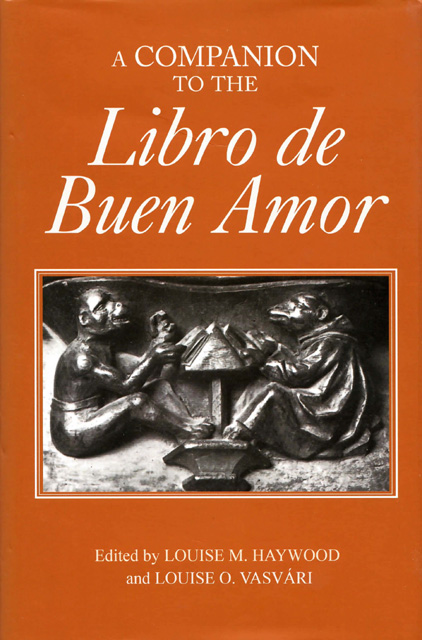Book contents
Text, Author, Reader, Reception: The Reflections of Theory and the Libro de Buen Amor
Published online by Cambridge University Press: 10 May 2023
Summary
If theory implies a stepping back in an act of observation, as its etymology suggests, encouraging us to reflect on our acts of interpretation, then surely the term is not out of place here; I submit that theory already has a large hold on the critical reception of the Libro, but that its role has not usually been made explicit. I hope to show that the Libro – or the three or four Libros, as the late Paul Zumthor would have said (1972), insisting on the mouvance of the text – invites us to be mindful of theory when we approach the work.
If criticism on the Libro ineluctably leads us back to the undecidable, then our interest in most of the critical discussions of the work must be as much in the process of criticism as in its product. That is, the final result will in some respects matter less than the path by which a particular critic has passed; in almost every instance another theoretical path would lead to a different set of results. As with the historical Juan Ruiz, for whom we have either too many candidates or none at all, so also for many of the crucial questions about the Libro we have numerous (and contradictory) answers, depending on the evidence selected – and, often enough, we simply have no answers at all. The conclusions of any scholarly investigation will be those made possible by the theoretical approach being used. As a famous crux of the Libro seems to suggest, the work can say what one wishes to make it say: ‘bien o mal, qual puntares, tal te dirá çiertamente’ (70b). The fingers of one’s theory simply pluck the melody of the critical approach.
We are, fortunately, past the period when critics held that they had no theory. They may not always have been conscious of their theory, but even a ‘commonsensical’ approach to any work determined what was common-sensical according to a complex system of theoretical presuppositions. The area of critical study that was earliest codified in theoretical terms was textual criticism, forming as it did the basis for editions of the work.
- Type
- Chapter
- Information
- A Companion to the Libro de Buen Amor , pp. 131 - 150Publisher: Boydell & BrewerPrint publication year: 2004
- 1
- Cited by



